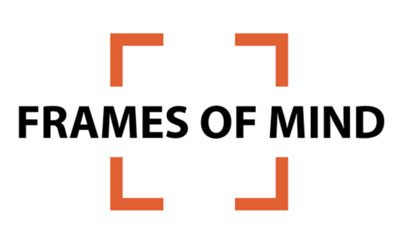
If your nonprofit is blocked due to misperceptions from a key partner or the public, new technologies—specifically augmented reality (AR) and virtual reality (VR)—are important tools to understand and master. Because these technologies embed us in a unique new environment, they can sometimes upend old concepts and open us up to transformational experiences and understandings.1 The sheer power of their impact is one reason that everyone from the defense industry to Hollywood is jumping on the bandwagon.
Virtual reality is like an immersive movie. Augmented reality layers information or content on top of the real world. A popular example is Pokémon Go, where players hunt for virtual pets in the real world. While these examples may seem exotic now to nonprofit leaders, soon they will be pervasive. By 2021, the virtual and augmented reality market is expected to reach $215 billion, roughly four times the size of the coffee industry in the US.2
This is why Google, Sony, Microsoft, and Taiwan-based HTC are investing billions in both VR and AR. While these corporations understand the power of their technology, they lack a broad perspective on the applicability of these media for social good. It falls to the nonprofit field to make that adaptation, relying upon what nonprofit leaders know about social issues and the narratives that help explain them.
How does one do this in real time? We have built several VR experiences3 together, combining framing research on a particular social issue with creative production. We have also made physical games and interactive experiences that promote deeper understanding of social issues. In doing so, we have had to adjudicate our own professional perspectives in order to create a product that uses the medium well while delivering an impactful social experience. We offer below four lessons drawn from our experiences, lessons that we believe can help nonprofit leaders use these new technologies for social good. These lessons combine the science of storytelling and framing research4 with the demands and artistry of new media.
Sign up for our free newsletters
Subscribe to NPQ's newsletters to have our top stories delivered directly to your inbox.
By signing up, you agree to our privacy policy and terms of use, and to receive messages from NPQ and our partners.
- Don’t drag old narrative patterns into these new technologies. When we set out to make a VR experience about oceans and climate change in Share the Science®: Climate Change, we knew from the FrameWorks research that people would try to individualize the problem, i.e., blame it on people who buy greedy guzzlers and refuse to recycle, etc. By placing people at the bottom of the ocean or letting them view earth from space, we were able to help them see the interconnections among environmental systems and to understand how individual actions were insufficient. By its very definition, VR allows you to go wide and to make connections that put individual actions in context.
- Use the technology to place the user in the story, where experience can drive understanding. Communications research strongly suggests that the best way to change minds is to give people a direct experience with a problem. When we built Share the Science®: STEM, we forced the user to embody a different character; in this case, the user became a young child and experienced STEM learning through their eyes. Importantly, we did not ask the user to sympathize with the young child, but rather to literally become that child in their world. The ability to shift roles is one among many of VR’s advantages.
- Be careful how you use player agency in your experience. Choice is a powerful feature that must be understood in the context of both the technology and the frame effects. You can’t deny people agency, but you want people to see how their agency takes place in a context that defines the paths, choices, and options. For example, players have the option to pick different items in a forced-choice situation, but all should resolve to the same narrative thread. In Share the Science®: Climate Change, players can see how rampant carbon dioxide is contributing to climate change, but they are not allowed to reduce the problem by recycling and consumer choice—two common easy, but inadequate answers to the climate change challenge. In this way, VR allows you to do essential framing maneuvers in more powerful ways than text or visuals.
- Don’t play for empathy. It will be extremely tempting to use the first person, in-the-driver-seat aspect of these new technologies to try to get people to sympathize with victims of a social problem. But if this is a mistake in communications more generally, as social scientists have argued,5 it is even more of a mistake with these media. By revealing a dysfunctional system, you put people in problem-solving mode and direct their attention to policies and programs that would change the dynamics of the situation for affected parties. It is instructive to remember that one of the first and most famous games for social change, Darfur is Dying, was not about getting people to feel sorry for its protagonists but rather to see how intractable were the conditions surrounding them.
It’s not going to be easy to adapt these new technologies to social causes. But we suspect it is going to be well worth the trouble. The industry predicts that 22 million headsets will be sold this year, and that within the next four years total units sold will reach 121 million. To date, there is very little educational content for those headsets—and very, very little that could be categorized as social change-oriented. That said, some of the early educational content is paving the way for the kinds of VR experiences that nonprofits will want to produce down the road. Google has started an educational campaign called Expeditions that take students to places all over the world that they would not otherwise be able to visit. Kids hike the Great Wall of China and dive underwater in the Great Barrier Reef. In this way, technologies associated with couch-potato individualizing entertainment actually take kids outside and connect them socially to others with their interests.
There are dozens of creative adaptations that remain to be done. VR has been proven to help soldiers with PTSD; the medical applications are enormous. Augmented reality allows you to see Ikea furniture in your apartment before you buy it. Now, the hard work falls to NGOs, which must think about how these technologies might serve social causes. An augmented reality approach to immigration, for example, might pan the community and show businesses started by immigrants, new inventions from immigrants, tax revenues used to build infrastructure, and the like. An augmented reality approach to poverty might override the “bootstraps” narrative by documenting the lack of accordable housing, limited access to education, and prevalence of food deserts.
Are VR and AR good tools for the communications problems you confront as a nonprofit strategist? Here are some questions that can help you make that determination:
- Does the issue require a broader perspective—more environment, more interaction, more causality—in order for the public to understand and address it? If so, VR is a good option. Limitations in the public’s ability to fully conceptualize issues like public health, the environment, and housing can be offset by the wide-angle lens that VR offers.
- Are there missing ingredients in public understanding? For example, FrameWorks’ research on education reveals a limited view of the multiple forces that influence education outcomes—principals, boards of education, legislators, etc. One can imagine a VR or AR application that superimposed these actors on the classroom to demonstrate how an entire orchestra of education players contribute to educational outcomes.
- Would people benefit from being placed in an unfamiliar environment? For example, you don’t experience aging until you are old, so imagining the actual experience is challenging. By placing a user in an environment that is built for active young adults, people can begin to imagine how the built environment works against older adults and might be changed to support them. Again, as with Darfur is Dying, the goal should be to reveal the systems that influence individual outcomes, consistent with a framing perspective on social policies.
- Are current media inadequate to the task? When your issue is much easier to show than to tell AND the passive observer stance that documentary film offers cannot convey the complexity of the problem, these new technologies provide additional narrative options.
The answers to many of these questions require a deep understanding of how the public thinks about a social problem. This is why we believe strongly that good media are dependent upon good framing research. We wouldn’t have known how to use the new media effectively if we had not had access to the FrameWorks research. So, as with any technology, knowing what the communications must be designed to do is imperative. At the same time, finding a creative partner that honors the social research as well as the technology is essential. It isn’t easy, as we can attest, but the potential to give people an embodied “memory” from their actual experience with your social issue compensates for the difficulty. When you hand a headset to a trustee, legislator, neighbor or colleague, you share an experience that has been imbued with your knowledge of the social problem. That’s a great conversation opener.
Notes
- For more on this, see Kahneman, Daniel. (2011). Thinking, Fast and Slow, New York: Farrar, Straus and Giroux.
- Retail value, from the Specialty Coffee Association of America Facts and Figures, 2015.
- You can download Share the Science®: STEM and Share the Science®: Climate Change without cost at https://sharethescience.org.
- For more on narrative structures suitable to social change, see Bales, S.N. “The Case for Explanatory Stories” in Change Agent, Spring 2018, 65-69.
- See Gilliam, Franklin. (2006). Vivid Examples: What They Mean and Why You Should Be Careful Using Them. Washington, DC: FrameWorks Institute.











